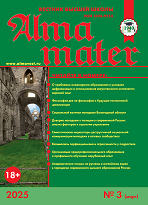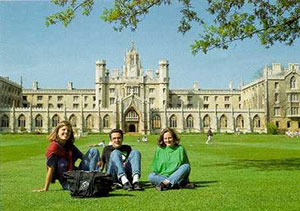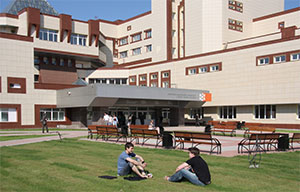Nikolai N. Yasnikov, Research teacher, Junior researcher, Vologda Scientific Center of the Russian Academy of Sciences, Cherepovets city, Russia, e-mail: nyasnikov94@mail.ru, https://orcid.org/0000-0003-1845-154X
This work is devoted to the study of the social capital of young people in the Vologda region. The study of the social capital of young people is necessary for understanding the dynamics of social change and the formation of future leaders of society, since it is at this age that active assimilation of social roles and norms occurs, which affects their further life and professional identity. The topic of social capital today is of increasing interest to the scientific community, including in relation to such a social group as youth. Every year, more and more articles appear on the importance of studying the social capital of young people, but most of them describe the experience of foreign researchers. Domestic scientific publications are more often devoted to the issue of human capital rather than social capital. In this regard, we decided to study the features of the social capital of Vologda youth and its relationship with their social sentiments and perception of the surrounding society. The study was conducted using an indicator model of social capital, based on a public opinion survey conducted by the Vologda Scientific Center of the Russian Academy of Sciences in 2024 in the Vologda Oblast. The results of the study showed that having higher levels of social capital is associated with more positive social attitudes and assessments of the surrounding reality. Young people with high levels of social capital are more likely to conclude that society is mostly fair and that people live in harmony in it.
Keywords: social capital, youth, Vologda Oblast, region, social attitudes
References
- Apenko, S.N., Lukash, A.V., Davydov, A.I. Integration of universities and employers — potential in the formation of social capital. Higher education in Russia. 2024. Vol. 33 (7). P. 144–164. DOI: 10.31992/0869-3617-2024-33-7-144-164
- Guzhavina, T.A., Yasnikov, N.N. The relationship between social capital and collective actions among young people. Case of the Vologda region. Scientific result. Social and humanitarian research. 2022. Vol. 8. No. 2. P. 106–123.
- Guseva, P.D. Demonstrations as a Form of Non-Institutionalized Political Participation: Relationship with Trust in Institutions and Risks of the Political Regime (Based on the European Social Survey, 2020–2022). Sociological Journal. 2024. Vol. 30. No. 4. P. 54–78.
- Collective Actions and Social Capital in Russian Society: Monograph / T.A. Guzhavina, D.V. Afanasyev, K.E. Kosygina, Yu.V. Ukhanova, I.N. Dementeva, N.N. Yasnikov, D.A. Lastovkina. Vologda: Vologda Scientific Center of the Russian Academy of Sciences Press. 2022. 228 p.
- Lisovsky, V.T. Spiritual world and value orientations of the youth of Russia. St. Petersburg, 2000. 512 p.
- Petukhov, R.V. Institutional changes and the dynamics of trust in local authorities in modern Russia. Sociological research. 2024. No. 11. P. 74–86. DOI: 10.31857/S0132162524110066
- Pesha, A.V. Factors in the construction and development of an academic career: a systemic theoretical analysis. Higher education in Russia. 2023. Vol. 32. No. 7. P. 9–34. DOI:10.31992/0869-3617-2023-32-7-9-34
- Regional social capital in times of crisis / Guzhavina, T.A. Afanasyev, D.V., Vorobyova, I.N., Dementyeva, I.N. et al. Cherepovets: ChSU Press, 2018. 220 p.
- Bano, S., Cisheng, W., Ali Nawaz Khan, Naseer Abbas Khan. WhatsApp use and student’s psychological well-being: Role of social capital and social integration. Children and Youth Services Review. 2019. Vol. 103. P. 200–208. https://doi.org/10.1016/j.childyouth.2019.06.002
- Boat, A.A., Syvertsen, A.K., Scales, P.C. The role of social capital in promoting work readiness among opportunity youth. Children and Youth Services Review. 2021. Vol. 131. P. 106270. https://doi.org/10.1016/j.childyouth.2021.
- Dolan, P. Social support, empathy, social capital and civic engagement: Intersecting theories for youth development. Education, Citizenship and Social Justice. 2022. Vol. 17. No. 3. P. 255–267.
- Gaoming, M., Qiaobing, W. Social capital and educational inequality of migrant children in contemporary China: A multilevel mediation analysis. Children and Youth Services Review. 2019. Vol. 99. P. 165–171. https://doi.org/10.1016/j.childyouth.2019.02.002.
- Iqbal, M.M.A., Mahmood, Q.K., Saud, M., Hayat, N. Social capital and happiness in university students: a higher-order analysis. International Journal of Adolescence and Youth. 2023. Vol. 28 (1). https://doi.org/10.1080/02673843.2023.2261526
- Jinho, A., Jae-sung Choi. Impact of Social Capital on Social Isolation in Young Adults: A Longitudinal Analysis of Comparing the Employed and the Unemployed. Forum for youth culture. 2022. Vol. 0. No. 72. P. 105–136. DOI:10.17854/ffyc.2022.10.72.105
- Jordan, L.P.; Zhou, X.; Fang, L.; Wu, Q.; Ren, Q. Remaining in School in Rural China: Social Capital and Academic Self-Efficacy. Youth. 2022. No. 2. P. 138–149. https://doi.org/10.3390/youth2020011
- Kan, W.S. To explore the relationship between online social capital and future expectation among university students in Hong Kong. International Journal of Adolescence and Youth. 2023. Vol. 28 (1). https://doi.org/10.1080/02673843.2023.2272616
- Kim E, Song, MK. Profiles of Social Capital and the Association with Depressive Symptoms Among Multicultural Adolescents in Korea: A Latent Profile Analysis. Front. Public Health. 2022. 08 March. Vol. 10. P. 794729. DOI: 10.3389/fpubh.2022.794729. PMID: 35345507. PMCID: PMC8957210.
- Mou, X. The Intrinsic Logic, Realistic Dilemmas, and Development Path of Youth Physical Health Coordinated Governance Based on Social Capital Theory in China. Frontiers in Humanities and Social Sciences. 2025. Vol. 5 (1). P. 106–114. https://doi.org/10.54691/g5a2rp84
- Ogden, L.J., Mazzucato, V. Transnational Peer Relationships as Social Capital: Mobile Migrant Youth between Ghana and Germany. Journal of Youth Studies. 2021. Vol. 25 (3). P. 344–361. DOI:10.1080/13676261.2020.1869197
- Park, Sung-joon. The longitudinal effects of youth social capital on self-rated health. Studies on Korean Youth. 2018. Vol. 29. No. 2. P. 241–269. DOI: 10.14816/sky.2018.29.2.241
- Pearce, S., Kristjansson, E. Perceptions of the Physical and Social Neighbourhood Environment and Youth Volunteerism: Canada’s Capital Region. Canadian Journal of Nonprofit and Social Economy Research. 2019. Vol. 10. Iss. 1. P. 41–60. https://doi.org/10.22230/cjnser.2019v10n1a291
- Skobba, K., Meyers, D., Tiller, L. Getting by and getting ahead: Social capital and transition to college among homeless and foster youth. Children and Youth Services Review. 2018. Vol. 94. P. 198–206. https://doi.org/10.1016/j.childyouth.2018.10.003.
- Sobba, K.N. Correlates and buffers of school avoidance: a review of school avoidance literature and applying social capital as a potential safeguard. International Journal of Adolescence and Youth. 2018. Vol. 24 (3). P. 380–394. https://doi.org/10.1080/02673843.2018.1524772











.png)






